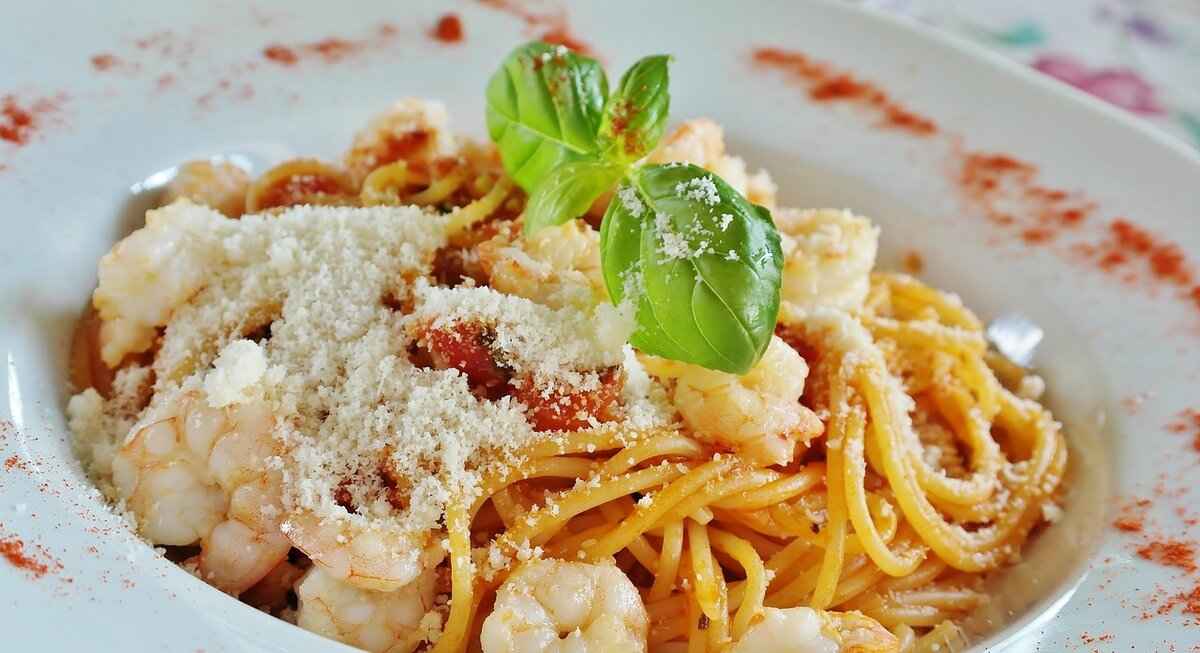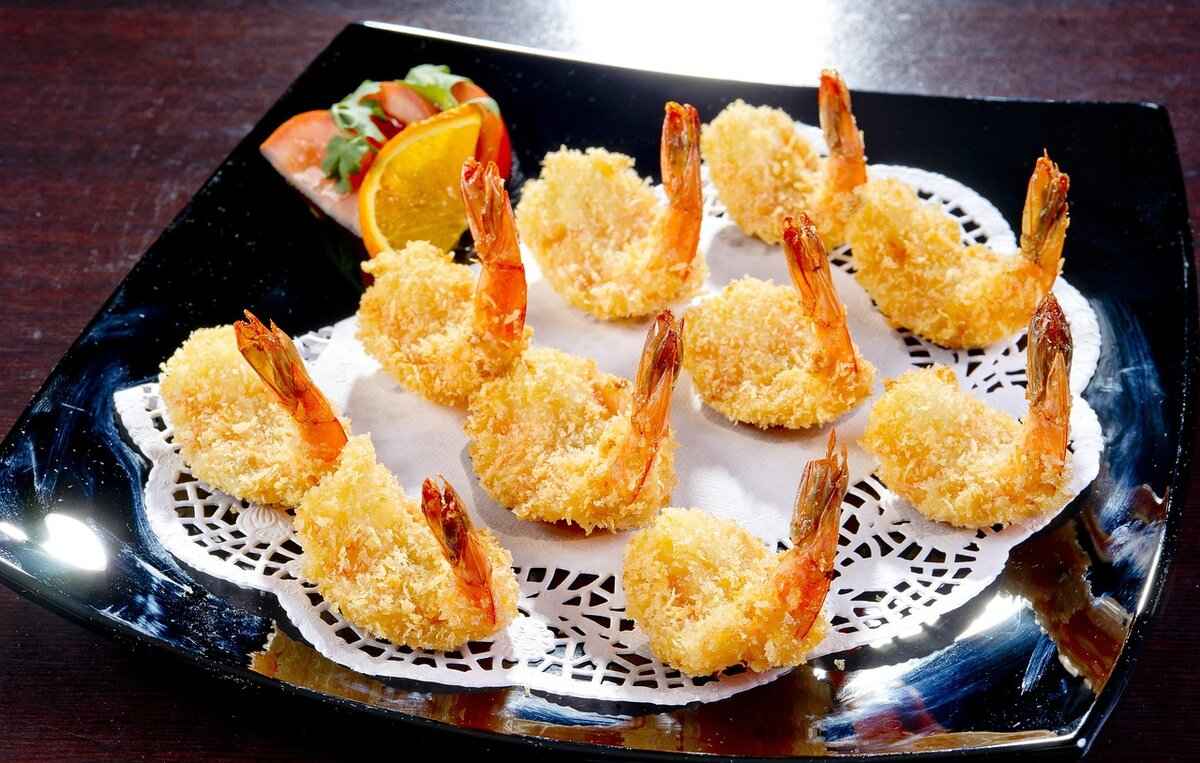Balinese cuisine is a vibrant tapestry of flavors, colors, and aromas that encapsulates the rich cultural heritage of Bali. This tropical paradise offers a culinary journey that reflects not only the island’s natural bounty but also its deep-rooted traditions. From the bustling markets filled with fresh produce to the intricate rituals surrounding food preparation, Balinese cuisine is a celebration of life and community.
Balinese cuisine is distinguished by its diverse ingredients and traditional cooking methods. The use of fresh, locally sourced produce is paramount, ensuring that every dish bursts with flavor. Traditional cooking techniques, such as grilling and steaming, are commonly employed, preserving the natural essence of the ingredients while enhancing their taste.
At the heart of Balinese dishes lies a variety of essential ingredients:
- Spices and Herbs: Ingredients like turmeric, lemongrass, and galangal are staples that define the bold flavors characteristic of Balinese cuisine.
- Fresh Produce: Seasonal vegetables and fruits play a crucial role, contributing to the freshness and authenticity of every meal.
- Meat and Seafood: Diverse protein sources, including chicken, pork, and an array of seafood, are integral to Balinese meals.
To truly appreciate Balinese cuisine, one must indulge in its iconic dishes:
- Nasi Goreng: This beloved fried rice dish is a staple, often prepared with a variety of ingredients, including vegetables and meats, making it a flavorful meal.
- Bebek Betutu: A royal dish featuring duck marinated in spices and wrapped in banana leaves, showcasing the artistry of Balinese cooking.
Food in Bali is not merely sustenance; it is deeply intertwined with the island’s culture. Culinary rituals are an essential part of religious ceremonies, where offerings are made to honor the gods. These practices reflect the spiritual connection that Balinese people have with their food.
Moreover, shared meals foster community ties, emphasizing the importance of food in social gatherings. Whether during family celebrations or local festivals, food serves as a connector, bringing people together and reinforcing cultural identity.
For those eager to savor authentic Balinese dishes, there are various options:
- Local Warungs: These small, family-run eateries offer traditional dishes at affordable prices, providing a genuine taste of local life.
- Fine Dining Experiences: Upscale restaurants creatively reinterpret Balinese cuisine, offering modern twists while honoring traditional flavors.
For culinary enthusiasts wishing to recreate Balinese flavors at home, here are some practical tips:
- Finding Authentic Ingredients: Seek out local Asian markets or online retailers that specialize in Indonesian ingredients to ensure authenticity in your dishes.
- Essential Cooking Techniques: Mastering techniques like grilling and steaming will enhance your culinary skills and help replicate authentic flavors.
In summary, Balinese cuisine is a vibrant expression of the island’s culture and traditions. By exploring its unique ingredients, traditional dishes, and cultural significance, one can truly appreciate the culinary paradise that Bali offers.

What Makes Balinese Cuisine Unique?
Balinese cuisine is a vibrant tapestry of flavors, colors, and cultural significance, reflecting the lush landscapes and rich traditions of Bali. The uniqueness of this cuisine lies in its meticulous use of fresh ingredients, traditional cooking methods, and the deep-rooted cultural practices that influence its dishes. Let’s explore what makes Balinese cuisine stand out in the culinary world.
At the heart of Balinese cuisine is a commitment to using fresh, local ingredients. The island’s tropical climate allows for a diverse array of produce, including fruits, vegetables, and herbs, all of which are harvested at their peak. This emphasis on freshness not only enhances the flavor of the dishes but also supports local farmers and sustainable practices.
- Traditional Cooking Techniques: Balinese chefs employ various cooking techniques, such as grilling, steaming, and slow-cooking. These methods help preserve the natural flavors of the ingredients while infusing them with aromatic spices.
- Cultural Influences: The culinary practices of Bali are deeply intertwined with its rich cultural heritage, including Hindu rituals and ceremonies. Food is often prepared for offerings and celebrations, making it a central aspect of community life.
The use of spices and herbs is another defining characteristic of Balinese cuisine. Ingredients like turmeric, ginger, and chili are not just flavor enhancers; they also carry medicinal properties, reflecting the island’s holistic approach to health and wellness. The traditional spice blend known as bumbu serves as the foundation for many dishes, providing a complex flavor profile that is both aromatic and savory.
| Ingredient | Role in Cuisine |
|---|---|
| Turmeric | Gives dishes a vibrant yellow color and adds a warm, earthy flavor. |
| Lemongrass | Adds a citrusy aroma and is often used in soups and marinades. |
| Galangal | Provides a sharp, peppery flavor, essential in many traditional recipes. |
Another aspect that makes Balinese cuisine unique is its focus on seasonal ingredients. The island’s farmers grow a variety of produce, including rice, vegetables, and fruits, which are incorporated into dishes based on what is currently in season. This not only guarantees freshness but also encourages creativity in the kitchen as chefs adapt their menus to reflect the changing availability of ingredients.
In addition to the ingredients, the way food is served and enjoyed in Bali adds to the uniqueness of its cuisine. Meals are often communal, with dishes placed in the center for everyone to share. This practice fosters a sense of community and connection, making dining a social event rather than just a means of sustenance.
Ultimately, the distinctive characteristics of Balinese cuisine are a celebration of the island’s natural bounty and cultural richness. From the careful selection of ingredients to the time-honored cooking techniques, every aspect of Balinese food tells a story of tradition, community, and respect for nature.

Key Ingredients in Balinese Cooking
Balinese cuisine is a vibrant tapestry of flavors, colors, and aromas, deeply rooted in the island’s rich cultural heritage. The key ingredients that define Balinese cooking are a reflection of the region’s natural bounty, showcasing the use of fresh produce, aromatic spices, and traditional cooking methods. This section delves into the essential components that contribute to the unique culinary identity of Bali.
- Aromatic Spices: The backbone of Balinese dishes, spices such as turmeric, coriander, and cumin are used liberally to create bold flavors. Turmeric, in particular, is prized not only for its vibrant color but also for its health benefits.
- Herbs: Fresh herbs like lemongrass, galangal, and kaffir lime leaves are integral to many recipes, providing fragrant notes that elevate the overall taste. These herbs are often used in marinades and spice pastes, enhancing the depth of flavor in dishes.
- Vegetables: Bali’s tropical climate allows for a variety of fresh vegetables to thrive. Eggplant, long beans, and spinach are commonly featured, adding not only nutrition but also vibrant colors to the plate.
- Rice: As a staple food, rice is a crucial component of Balinese meals. Nasi putih (white rice) is typically served alongside main dishes, while nasi goreng (fried rice) is a beloved comfort food that showcases the versatility of this grain.
- Meat and Seafood: Balinese cuisine features a variety of protein sources, including chicken, duck, and fresh seafood. Traditional dishes often involve marinating proteins in spice pastes before grilling or slow-cooking them, resulting in tender and flavorful meals.
How Do These Ingredients Shape Balinese Dishes?
The combination of these key ingredients creates a symphony of flavors that is both complex and satisfying. For instance, the use of bumbu (spice paste) is fundamental in many Balinese dishes. This blend typically includes a variety of spices and herbs, which are ground together to form a fragrant paste that is used as a marinade or cooking base.
Seasonality and Local Sourcing
Another vital aspect of Balinese cooking is the emphasis on seasonal ingredients. Local markets are filled with fresh produce that changes with the seasons, ensuring that meals are not only flavorful but also environmentally sustainable. This practice not only supports local farmers but also enhances the freshness of the dishes served.
Conclusion
Understanding the key ingredients in Balinese cooking provides insight into the island’s culinary identity. The rich flavors and vibrant colors not only reflect the natural beauty of Bali but also its cultural heritage. By using fresh, local ingredients and traditional cooking techniques, Balinese cuisine offers a unique and unforgettable dining experience.
Spices and Herbs: The Heart of Balinese Flavors
Spices and herbs play an essential role in defining the rich and vibrant flavors of Balinese cuisine. They are not merely ingredients; they are the very essence that brings life to each dish, transforming simple meals into extraordinary culinary experiences. Among the most celebrated are turmeric, lemongrass, and galangal, each contributing unique characteristics that reflect the island’s cultural heritage and natural bounty.
Turmeric is often referred to as the golden spice of Bali. Its vibrant yellow hue adds a beautiful color to dishes, while its earthy flavor enhances the overall taste. Rich in antioxidants and anti-inflammatory properties, turmeric is not only a culinary staple but also a key ingredient in traditional medicine. It is commonly used in dishes like Rendang and Satay, where it melds harmoniously with other spices to create a complex flavor profile.
Lemongrass is another vital herb in Balinese cooking, known for its citrusy aroma and refreshing taste. This herb is often used in soups, marinades, and sauces, imparting a bright and zesty flavor that complements the richness of meats and seafood. Its versatility makes it an indispensable ingredient in dishes such as Soto Ayam and Lawar. Additionally, lemongrass is believed to have various health benefits, including digestive support.
Galangal, often mistaken for ginger, is a key ingredient that adds a distinct flavor and aroma to Balinese dishes. Its sharp, peppery notes provide depth, making it a crucial component in spice pastes like bumbu. Galangal is commonly used in soups and curries, enhancing dishes such as Be Soto and Ayam Betutu. Its unique flavor profile sets Balinese cuisine apart, showcasing the island’s diverse culinary landscape.
The true magic of Balinese cuisine lies in the harmonious blending of spices and herbs. For instance, the combination of turmeric, lemongrass, and galangal forms the base of many traditional dishes, known as bumbu. This spice mix is often pounded into a paste with other ingredients like garlic, shallots, and chilies, creating a robust flavor foundation. The careful balance of these elements is what gives Balinese food its distinctive taste and aroma.
In addition to individual spices, Balinese chefs often utilize traditional spice blends that elevate the culinary experience. For example, Bumbu Bali is a popular blend that incorporates a variety of spices, including coriander, cumin, and even shrimp paste, to create a rich and flavorful base for many dishes. Understanding these blends is essential for anyone looking to replicate authentic Balinese flavors at home.
For those interested in exploring Balinese cuisine, sourcing fresh spices and herbs is crucial. Visit local markets or specialty stores to find authentic ingredients. When cooking, consider experimenting with different combinations of turmeric, lemongrass, and galangal to create personalized dishes that reflect your taste preferences. Mastering the art of Balinese cooking involves not only understanding these ingredients but also appreciating the cultural significance they hold.
In summary, the spices and herbs of Bali are more than just flavor enhancers; they are a reflection of the island’s rich culinary tradition. By embracing ingredients like turmeric, lemongrass, and galangal, you can embark on a flavorful journey that captures the essence of Balinese cuisine.
Traditional Spice Blends: Base for Many Dishes
Traditional spice blends are the heart and soul of Balinese cuisine, providing depth and complexity to a variety of dishes. Among these blends, bumbu stands out as a quintessential element, serving as the foundation for countless recipes that showcase the vibrant flavors of Bali. Understanding these spice blends is essential for anyone looking to explore or recreate authentic Balinese dishes.
Bumbu refers to a mixture of spices and herbs that are ground together to create a paste or powder. This blend is used as a seasoning base in many traditional Balinese recipes, enhancing the overall taste experience. The ingredients in bumbu often vary depending on the dish, but they typically include a combination of aromatic spices such as turmeric, ginger, galangal, and lemongrass.
- Turmeric: Known for its vibrant yellow color and earthy flavor, turmeric is a staple in many Balinese dishes.
- Ginger: This spice adds warmth and a hint of sweetness, balancing the heat from other ingredients.
- Galangal: Often confused with ginger, galangal has a sharper, more citrusy flavor, which is integral to the bumbu blend.
- Lemongrass: Its fresh, citrusy aroma brightens up the spice mix and adds a refreshing note.
- Chilies: Depending on the desired heat level, various types of chilies are included to give the spice blend a kick.
Bumbu is typically used in the marination of meats and seafood, as well as in sauces and soups. For instance, in the famous dish Bebek Betutu, duck is marinated in a rich bumbu paste before being wrapped in banana leaves and slow-cooked, allowing the flavors to penetrate deeply. Similarly, bumbu is essential in creating flavorful curries and stir-fries, making it an indispensable component of Balinese cooking.
While there are many variations of bumbu tailored to specific dishes, some common types include:
- Bumbu Bali: A versatile spice mix used for various meats and vegetables.
- Bumbu Kecap: A sweet soy sauce blend, often used in stir-fries.
- Bumbu Rujak: A spicy and tangy blend, typically used in salads and fruit dishes.
Beyond its culinary uses, bumbu holds cultural significance in Balinese society. The preparation of these spice blends is often a communal activity, bringing families and friends together. Furthermore, the use of bumbu in ceremonial dishes highlights its importance in religious and cultural celebrations, reflecting the deep connection between food and spirituality in Bali.
Creating your own bumbu at home can be a rewarding experience. Start with fresh ingredients for the best flavor, and adjust the proportions to suit your taste preferences. A simple bumbu can be made by blending the key spices with a bit of oil and salt to create a paste. Experimenting with different ingredients allows you to personalize your dishes while staying true to the essence of Balinese cuisine.
In conclusion, understanding traditional spice blends like bumbu not only enhances your culinary repertoire but also connects you to the rich cultural heritage of Bali. By incorporating these flavors into your cooking, you can experience a taste of this tropical paradise in your own kitchen.
Fresh Produce: A Celebration of Local Agriculture
In the heart of Bali, the vibrant culinary landscape is deeply intertwined with the island’s rich agricultural heritage. The emphasis on seasonal and locally-sourced produce is not merely a trend; it is a fundamental aspect of Balinese cooking that enhances the freshness and authenticity of the cuisine. Understanding this connection can elevate your appreciation for the flavors and traditions of Bali.
Why is Seasonal Produce Important in Balinese Cooking?
Seasonal produce is essential in Balinese cuisine for several reasons:
- Flavor and Freshness: Ingredients harvested at their peak ripeness are more flavorful and nutrient-rich. This is especially true for fruits and vegetables that thrive in Bali’s tropical climate.
- Support for Local Farmers: Using locally-sourced ingredients supports the community and promotes sustainable farming practices. This connection to local agriculture ensures that traditional farming techniques are preserved.
- Environmental Sustainability: Sourcing ingredients from local farms reduces the carbon footprint associated with transportation, making the cuisine more environmentally friendly.
What Types of Local Produce are Commonly Used?
Balinese cuisine showcases a diverse array of local produce, including:
- Vegetables: Leafy greens like kangkong (water spinach) and bok choy are staples, often featured in stir-fries and salads.
- Fruits: Tropical fruits such as mangoes, papayas, and bananas not only add sweetness to dishes but are also enjoyed fresh or in desserts.
- Herbs: Fresh herbs like cilantro, mint, and basil are essential for flavoring dishes and are often used in traditional spice blends.
How Do Locally-Sourced Ingredients Enhance Authenticity?
The authenticity of Balinese cuisine is significantly enhanced by the use of local ingredients. Traditional dishes such as Gado-Gado (a vegetable salad with peanut sauce) and Lawar (a mixed salad of vegetables, coconut, and minced meat) rely on fresh, local produce to deliver their unique flavors. The use of locally-sourced ingredients allows cooks to maintain the traditional flavors that have been passed down through generations.
What Role Do Markets Play in Accessing Fresh Produce?
Local markets, known as pasar, are vibrant hubs where farmers sell their freshest produce. Visiting these markets not only provides access to high-quality ingredients but also offers a glimpse into the daily life and culture of the Balinese people. Here, you can find a variety of seasonal fruits and vegetables, spices, and herbs, all contributing to the island’s culinary richness.
Conclusion
The celebration of fresh, seasonal, and locally-sourced produce is a cornerstone of Balinese cooking. By embracing these ingredients, chefs and home cooks alike can create dishes that are not only flavorful but also reflective of Bali’s agricultural heritage. This commitment to freshness and authenticity not only enhances the culinary experience but also fosters a deeper connection to the island’s culture and community.
Meat and Seafood: Protein Choices in Balinese Meals
Balinese cuisine is a delightful blend of flavors and textures, heavily influenced by the island’s rich cultural heritage and abundant natural resources. One of the most defining aspects of this culinary tradition is the variety of protein sources utilized in its dishes. In this section, we will explore the diverse options, including chicken, pork, and seafood, and examine how these proteins are traditionally prepared to create mouthwatering meals.
In Balinese cooking, the choice of protein plays a crucial role in defining the dish’s flavor profile. The three primary sources are:
- Chicken: Often marinated in rich spices, chicken is a staple in many traditional dishes.
- Pork: Known for its versatility, pork is celebrated in various forms, from roasted to grilled.
- Seafood: With Bali’s coastal location, fresh seafood is abundant and features prominently in local recipes.
Chicken is a beloved protein in Balinese cuisine, featured in dishes like Ayam Betutu. This dish involves marinating the chicken in a mixture of spices, including turmeric, garlic, and ginger, before wrapping it in banana leaves and slow-cooking it. This method not only infuses the meat with rich flavors but also keeps it tender and juicy.
Pork is often associated with celebrations and special occasions in Bali. One of the most famous dishes is Babi Guling, or roasted suckling pig. The pig is marinated with a blend of spices, including coriander and lemongrass, and then roasted to perfection, resulting in crispy skin and succulent meat. This dish exemplifies the Balinese approach to cooking, where flavor and presentation are paramount.
Given Bali’s rich maritime resources, seafood is not only a dietary staple but also a source of cultural pride. Dishes like Jimbaran Grilled Fish highlight the island’s seafood offerings. Fresh fish is marinated in a spicy paste made from local herbs and grilled over an open flame, creating a smoky flavor that is irresistible. The freshness of the seafood, combined with traditional cooking methods, makes these dishes a must-try for anyone visiting Bali.
Balinese cuisine employs various traditional cooking techniques that elevate the flavors of these protein sources. Techniques such as grilling, steaming, and slow-cooking are commonly used to ensure that the proteins remain tender and flavorful. The use of local spices and herbs in marinades further enhances the taste, making each dish a celebration of Bali’s culinary heritage.
In Balinese culture, food is not just about taste; it is also about aesthetics. Dishes are often beautifully presented, with vibrant colors and intricate arrangements. This attention to detail reflects the Balinese philosophy of harmony and balance, making each meal not only a feast for the palate but also for the eyes.
In summary, the diverse protein choices in Balinese meals, including chicken, pork, and seafood, showcase the island’s rich culinary traditions. Through traditional cooking methods and the use of local spices, each dish tells a story of Bali’s cultural heritage, making it an essential experience for visitors and locals alike.

Traditional Balinese Dishes You Must Try
When visiting Bali, indulging in the local cuisine is an essential part of the experience. The island’s culinary landscape is a vibrant tapestry woven from rich traditions, fresh ingredients, and cultural significance. Here, we will explore some iconic Balinese dishes that not only tantalize the taste buds but also offer a glimpse into the heart of Balinese culture.
- Nasi Goreng: Often regarded as Indonesia’s national dish, Nasi Goreng is a flavorful fried rice dish that embodies the essence of Balinese cooking. Typically prepared with a variety of ingredients, including vegetables, meats, and a blend of spices, it is often served with fried eggs and prawn crackers. Its versatility allows for numerous variations, making it a must-try for any visitor.
- Bebek Betutu: This traditional dish features duck marinated in a rich mix of spices, then wrapped in banana leaves and slow-cooked to perfection. The process of cooking Bebek Betutu is an art form that showcases the culinary prowess of the Balinese people, making it a royal dish often served at ceremonies and special occasions.
- Sate Lilit: A unique twist on the classic Indonesian satay, Sate Lilit is made from minced meat, usually fish or chicken, mixed with grated coconut and aromatic spices. This mixture is then wrapped around bamboo sticks and grilled to create a delightful smoky flavor. It’s a popular snack that reflects the island’s seafood bounty.
- Lawar: A traditional mix often served as a side dish, Lawar is made from finely chopped vegetables, minced meat, and a variety of spices. It can be prepared with either fresh or cooked ingredients, and its flavor profile ranges from spicy to tangy, depending on the recipe. Lawar is often enjoyed during ceremonies and communal meals.
- Ayam Betutu: Similar to Bebek Betutu, Ayam Betutu features chicken marinated in a rich spice mixture, wrapped in banana leaves, and slow-cooked. This dish is a staple at festive gatherings and symbolizes hospitality in Balinese culture, reflecting the island’s communal spirit.
- Gado-Gado: This salad is a colorful mix of steamed vegetables, tofu, and hard-boiled eggs, all drizzled with a creamy peanut sauce. Gado-Gado is not only a delicious vegetarian option but also a dish that represents the harmony of flavors found in Balinese cuisine.
Each of these dishes is a testament to the rich culinary heritage of Bali, showcasing the island’s unique flavors and cooking techniques. They are not just meals; they are experiences that connect you to the local culture and traditions. Whether enjoyed at a bustling warung or a high-end restaurant, these traditional Balinese dishes promise a delightful culinary journey that will leave a lasting impression.
In summary, to truly appreciate Bali, one must embrace its culinary offerings. From the beloved Nasi Goreng to the ceremonial Bebek Betutu, each dish tells a story of the island’s history, community, and identity. So, when you find yourself in Bali, make it a point to savor these iconic dishes and immerse yourself in the rich tapestry of Balinese cuisine.
Nasi Goreng: Indonesia’s Beloved Fried Rice
Nasi Goreng, often referred to as Indonesia’s beloved fried rice, is more than just a dish; it is a culinary symbol that encapsulates the essence of Balinese cuisine. This vibrant meal is a staple across Indonesia, particularly in Bali, where it reflects the island’s rich cultural heritage and diverse culinary influences.
At its core, Nasi Goreng is a versatile dish that can be adapted to include a variety of ingredients, making it a favorite among locals and tourists alike. Traditionally, this dish is made with leftover rice, which is stir-fried with a mix of spices, vegetables, and proteins. The result is a deliciously fragrant and flavorful meal that embodies the spirit of Balinese cooking.
The preparation of Nasi Goreng involves several key steps:
- Choosing the Right Rice: Day-old rice is preferred for its firmness, which prevents clumping during frying.
- Creating the Base: A blend of aromatic spices, often including garlic, shallots, and chili, forms the foundation of the dish. This mixture is sautéed in oil to release its flavors.
- Adding Vegetables: Fresh vegetables such as carrots, peas, and green onions are commonly included, adding color and nutrition.
- Incorporating Proteins: Chicken, shrimp, or tofu can be added, providing a satisfying source of protein.
- Finishing Touches: The dish is typically seasoned with sweet soy sauce (kecap manis) and topped with a fried egg, adding richness and texture.
The uniqueness of Nasi Goreng lies in its flexibility. While the basic components remain consistent, variations abound, influenced by local ingredients and personal preferences. Some popular additions include:
- Kerupuk: These crispy crackers are often served on the side for added crunch.
- Pickled Vegetables: A tangy pickle can enhance the dish’s flavor profile.
- Fresh Herbs: Cilantro or basil may be sprinkled on top for a fresh finish.
Nasi Goreng is not just a meal; it is a reflection of Balinese culture and hospitality. The dish is often served at gatherings and celebrations, symbolizing togetherness and community. Its ability to incorporate various ingredients allows families to customize it according to their tastes and dietary needs, making it a beloved choice for all.
Visitors to Bali can find Nasi Goreng in a variety of settings, from humble street stalls to upscale restaurants. Local warungs, or small eateries, often serve some of the most authentic versions, allowing diners to experience traditional flavors in a casual atmosphere.
In conclusion, Nasi Goreng is a quintessential dish that showcases the heart and soul of Balinese cuisine. Its rich flavors, cultural significance, and adaptability make it a must-try for anyone visiting Bali. Whether enjoyed at a local warung or a fine dining establishment, this fried rice dish promises a delightful culinary experience.
Bebek Betutu: A Royal Dish of Slow-Cooked Duck
Bebek Betutu is not just a dish; it is a culinary masterpiece that encapsulates the essence of Balinese cooking. This traditional dish features duck that is marinated in an aromatic blend of spices, then wrapped in banana leaves and slow-cooked to perfection. The result is a succulent, flavorful meal that reflects the rich culinary heritage of Bali.
Bebek Betutu is a slow-cooked duck dish that is deeply rooted in Balinese culture. The preparation of this dish is a labor of love, often reserved for special occasions and ceremonies. The duck is first marinated in a mixture of spices, including turmeric, garlic, ginger, and chili, which not only infuses the meat with flavor but also adds a vibrant color.
The preparation of Bebek Betutu involves several meticulous steps:
- Marination: The duck is generously coated with a spice paste made from a variety of local herbs and spices. This marination can take several hours, allowing the flavors to penetrate the meat.
- Wrapping: After marination, the duck is wrapped in banana leaves. This not only helps in retaining moisture during cooking but also imparts a subtle flavor to the dish.
- Cooking: The wrapped duck is then slow-cooked, traditionally in an underground oven called a “bakar”, for several hours. This method ensures that the meat becomes incredibly tender and infused with the rich flavors of the spices.
Bebek Betutu holds a special place in Balinese culture, often being served during ceremonial feasts and family gatherings. Its preparation is seen as an art form, showcasing the skills and traditions passed down through generations. The dish is not only a treat for the palate but also a symbol of community and celebration.
If you’re looking to experience authentic Bebek Betutu, there are numerous places across Bali where this dish is served:
- Local Warungs: Small family-owned eateries often offer the most authentic versions of this dish, prepared using traditional methods.
- High-End Restaurants: Some upscale establishments put a modern twist on Bebek Betutu, elevating it to fine dining status while maintaining its traditional roots.
Absolutely! While the traditional preparation method may require some effort, making Bebek Betutu at home is a rewarding experience. Here are some tips:
- Source Authentic Ingredients: Look for local markets or specialty stores that sell Balinese spices and herbs.
- Follow Traditional Techniques: Emulate the wrapping and cooking methods to achieve the best results. If you don’t have access to a traditional oven, a slow cooker can be a great alternative.
In conclusion, Bebek Betutu is a dish that embodies the spirit of Balinese cuisine. Its intricate preparation and rich flavors make it a must-try for anyone looking to explore the culinary wonders of Bali. Whether enjoyed at a local warung or prepared at home, Bebek Betutu promises a taste of tradition and a celebration of Balinese culture.

The Cultural Significance of Balinese Cuisine
Balinese cuisine is not merely a collection of dishes; it is a vibrant reflection of the island’s rich cultural heritage. The significance of food in Bali transcends mere sustenance, playing a crucial role in both daily life and ceremonial practices. From intricate offerings made during religious ceremonies to communal feasts that strengthen social bonds, food is a vital thread woven into the fabric of Balinese culture.
In Bali, food holds deep spiritual significance. During religious ceremonies, offerings known as canang sari are meticulously prepared, showcasing a variety of ingredients that symbolize gratitude to the gods. These offerings often include fruits, rice, and flowers, arranged beautifully in woven baskets. The act of preparing these offerings is a sacred ritual, reflecting the Balinese people’s connection to their spirituality and the natural world.
The preparation and presentation of food in Bali are steeped in tradition. Each ingredient is selected with intention, embodying specific meanings. For instance, rice is not just a staple food; it is considered a sacred gift from the gods. The Balinese believe that the act of cooking and sharing food is a way to honor their ancestors and maintain harmony with the universe.
Food in Bali serves as a powerful medium for fostering community ties. Shared meals, whether during family gatherings or village celebrations, create a sense of belonging and unity. The traditional Balinese feast, or “mepandes,” is an example of how food brings people together, allowing them to bond over shared experiences and cultural practices.
During social events, such as weddings or religious festivals, the preparation of large quantities of food becomes a communal endeavor. Families and neighbors come together to cook and share their culinary skills, reinforcing social bonds and cultural identity. This collaborative spirit is not only about the food itself but also about the relationships nurtured through these shared experiences.
The culinary practices in Bali are a testament to the island’s identity. Traditional dishes, such as nasi campur and sate lilit, are not just meals; they represent the island’s history and the blending of various cultural influences over centuries. Each dish tells a story, reflecting the agricultural practices, local ingredients, and the artistry of Balinese cooking.
During significant life events, such as births, weddings, and cremation ceremonies, food plays a central role. Special dishes are prepared to honor the occasion, often accompanied by specific rituals. These culinary traditions not only celebrate life but also reinforce the community’s shared values and beliefs.
In summary, the cultural significance of Balinese cuisine is profound, extending beyond the flavors and ingredients to encompass spiritual beliefs and social connections. Whether through ceremonial offerings or communal feasts, food is an integral part of the Balinese way of life, embodying the island’s rich traditions and vibrant social fabric.
Culinary Rituals and Offerings
are integral to the cultural fabric of Bali, reflecting the island’s deep spiritual beliefs and community values. The Balinese people view food not merely as sustenance but as a means of connecting with the divine and maintaining harmony in their lives. This perspective is evident in their culinary practices, where every dish served in ceremonial contexts holds significant meaning.
Food offerings, known as “canang sari”, are daily rituals that symbolize gratitude to the gods and the spirits of ancestors. These offerings typically consist of a variety of items, including fruits, flowers, and rice, arranged beautifully in small baskets made from palm leaves. The act of preparing these offerings is a form of meditation and devotion, reinforcing the spiritual connection between the Balinese people and their culinary traditions.
During major religious ceremonies, the significance of food is amplified. Elaborate feasts are prepared to honor the gods, with dishes like Bebek Betutu and Nasi Campur taking center stage. Each dish is crafted with care, using fresh, local ingredients that not only please the palate but also symbolize abundance and gratitude. The preparation and presentation of these meals are considered acts of worship, transforming the culinary process into a sacred ritual.
The culinary practices in Bali reflect core values such as community, respect for nature, and spirituality. Meals are often shared among family and friends, fostering a sense of unity and belonging. The communal aspect of dining reinforces social bonds and highlights the importance of togetherness in Balinese culture. Additionally, the use of locally sourced ingredients emphasizes the Balinese commitment to sustainability and respect for their natural environment.
- Rice: A staple in Balinese cuisine, rice symbolizes life and fertility.
- Fruits: Fresh fruits like bananas and coconuts are offered as a sign of gratitude and abundance.
- Flowers: Beautifully arranged flowers are included to attract positive energy and blessings.
- Spices: Local spices are used not only for flavor but also for their aromatic properties, believed to purify the space.
In Balinese culture, culinary rituals and the preparation of offerings are often taught from one generation to the next. Elders pass down traditional recipes and techniques, ensuring that the cultural heritage is preserved. This transmission of knowledge is vital for maintaining the spiritual significance of food in daily life and religious practices.
Yes, food offerings play a crucial role in daily life by instilling a sense of mindfulness and gratitude. The act of preparing offerings encourages individuals to reflect on their blessings and the interconnectedness of life. This practice fosters a positive mindset, contributing to the overall well-being of the community.
In summary, the culinary rituals and offerings in Bali are a profound expression of the island’s spirituality and cultural identity. Through food, the Balinese people celebrate their connection to the divine, their community, and the natural world, making every meal an opportunity for reflection and gratitude.
Food as a Community Connector
In Bali, food is more than just sustenance; it is a vital thread that weaves together the fabric of community life and cultural identity. The act of sharing meals transcends mere eating; it fosters relationships, strengthens social bonds, and reinforces cultural traditions. This article explores how shared meals in Bali create a sense of belonging and highlight the significance of food in Balinese social life.
In Balinese culture, communal dining is a cherished practice that brings families and friends together. Whether it’s during religious ceremonies, family gatherings, or simple get-togethers, sharing food plays a crucial role in nurturing relationships. Meals are often served in a family-style setting, where various dishes are placed at the center of the table, encouraging everyone to partake and share.
- Strengthening Bonds: The act of sharing food promotes conversations and connections, allowing individuals to engage in meaningful interactions.
- Celebrating Togetherness: Festivals and special occasions are marked by large communal feasts, where the entire community comes together to celebrate.
- Passing Down Traditions: Shared meals often involve traditional recipes that are passed down through generations, reinforcing cultural identity.
Food is a powerful symbol of cultural identity in Bali. Each dish tells a story, reflecting the island’s rich history and diverse influences. Traditional Balinese dishes, such as Nasi Campur and Bebek Betutu, are not just meals; they are expressions of the island’s heritage and values.
Through shared meals, individuals experience a sense of pride in their culinary heritage. The preparation of traditional dishes often involves family members working together, reinforcing familial ties and cultural continuity. For instance, during the preparation of ceremonial offerings, families gather to create intricate food displays that honor their ancestors, thus deepening their connection to their cultural roots.
The importance of food in Balinese social life cannot be overstated. It serves as a medium for communication and connection. For instance, when someone invites you to share a meal, it signifies trust and friendship. The act of sharing food is a way to express hospitality and welcome others into one’s home.
Moreover, local warungs (small eateries) act as social hubs where people gather to eat, converse, and build community ties. These establishments not only serve food but also provide a space for social interaction, where friendships are forged over shared meals.
Shared meals offer numerous benefits that extend beyond the dining table:
- Emotional Well-being: Sharing meals can enhance feelings of happiness and belonging, reducing feelings of loneliness.
- Strengthened Community Ties: Regular communal dining fosters a sense of responsibility towards one another, creating a supportive network.
- Cultural Preservation: By sharing traditional meals, communities ensure that their culinary heritage is preserved for future generations.
In conclusion, the act of sharing meals in Bali is a profound expression of community and cultural identity. It fosters connections, celebrates traditions, and reinforces the social fabric of Balinese society. As the island continues to embrace modernity, the significance of food as a community connector remains a cherished aspect of Balinese life.

Where to Experience Authentic Balinese Cuisine
When visiting Bali, indulging in its rich culinary heritage is an essential part of the experience. From bustling local warungs to elegant fine dining establishments, there are countless options to savor the authentic flavors of Balinese cuisine. This guide will help you navigate the best places to enjoy traditional dishes, ensuring a memorable culinary journey.
Local Warungs: Hidden Gems of Bali
Local warungs are small, family-owned eateries that offer a glimpse into the heart of Balinese food culture. These establishments often serve home-cooked meals made from fresh, local ingredients, providing an authentic taste of Bali. Here are some must-visit warungs:
- Warung Babi Guling Ibu Oka: Famous for its Babi Guling (suckling pig), this warung is a favorite among locals and tourists alike.
- Warung Sopa: A vegetarian-friendly option that offers a variety of traditional dishes, including Nasi Campur and Gado-Gado.
- Warung Nasi Ayam Kedewatan Ibu Mangku: Known for its delicious Nasi Ayam (chicken rice), this warung provides a cozy atmosphere and friendly service.
Fine Dining Experiences: Elevating Balinese Flavors
For those looking to enjoy a more upscale dining experience, Bali boasts several fine dining restaurants that beautifully reinterpret traditional dishes. These establishments often combine local ingredients with innovative techniques, resulting in a unique culinary adventure. Consider these top choices:
- Locavore: Renowned for its commitment to local produce, Locavore offers a tasting menu that showcases the best of Balinese ingredients in a modern context.
- Mozaic: This award-winning restaurant blends French culinary techniques with Indonesian flavors, providing a sophisticated dining experience.
- La View Restaurant: Set amidst stunning rice paddies, La View offers a serene atmosphere paired with a menu that highlights traditional Balinese dishes with a contemporary twist.
Food Markets: A Culinary Adventure
Visiting local food markets is another excellent way to experience authentic Balinese cuisine. Here, you can sample street food, purchase fresh ingredients, and immerse yourself in the local culture. Notable markets include:
- Ubud Market: A vibrant hub where you can find everything from spices to traditional snacks, perfect for those wanting to taste local flavors.
- Seminyak Market: A bustling spot offering a mix of traditional Balinese dishes and international cuisine, catering to diverse tastes.
Cooking Classes: Learn and Taste
For a hands-on experience, consider participating in a Balinese cooking class. These classes often take place in local kitchens or farms, allowing you to learn traditional recipes while sourcing ingredients directly from the source. Some popular options include:
- Bali Asli: Located in the foothills of Mount Agung, this cooking school offers classes that focus on traditional Balinese cooking methods.
- Paon Bali Cooking Class: This class takes you through the entire process of preparing a Balinese feast, from market shopping to cooking.
In conclusion, whether you choose to dine at a humble warung or indulge in a fine dining experience, Bali offers a plethora of options to explore its authentic culinary landscape. Each meal tells a story, reflecting the island’s rich culture and traditions. Make sure to take the time to enjoy these culinary delights during your visit to this tropical paradise.
Local Warungs: Hidden Gems of Bali
Local warungs are the heart and soul of Bali’s culinary landscape. These small, family-run eateries offer a unique glimpse into the island’s culture and traditions, serving up authentic dishes that reflect the rich flavors of Balinese cuisine.
Warungs are not just places to eat; they are a culinary experience that embodies the spirit of local life. Each warung has its own distinct atmosphere, often adorned with traditional Balinese decor, making them feel like a home away from home. The owners typically prepare meals using family recipes passed down through generations, ensuring that every dish is steeped in history and authenticity.
One of the most appealing aspects of dining at warungs is the affordability. Visitors can enjoy a hearty meal for a fraction of the price found in upscale restaurants. This accessibility allows travelers to indulge in local flavors without breaking the bank. From Nasi Campur to Gado-Gado, the variety of dishes available showcases the island’s culinary diversity.
Choosing a warung over a traditional restaurant offers several advantages:
- Authenticity: Warungs often serve dishes that are true to Balinese heritage.
- Community Connection: Dining at a warung allows you to interact with locals and understand their way of life.
- Fresh Ingredients: Many warungs source their ingredients locally, ensuring freshness and quality in every bite.
When visiting a warung, be sure to try some of the following iconic dishes:
- Babi Guling: This succulent roast pig is a must-try, known for its crispy skin and tender meat.
- Ayam Betutu: A flavorful chicken dish marinated in spices and wrapped in banana leaves, then slow-cooked to perfection.
- Lawar: A traditional salad made from finely chopped vegetables, coconut, and minced meat, often served as a side dish.
Dining at a warung provides more than just a meal; it offers an opportunity to immerse yourself in Balinese culture. Many warung owners are eager to share their stories and the significance of the dishes they serve. Engaging with locals can enhance your understanding of Bali’s rich traditions and the role food plays in their daily lives.
While warungs can be found throughout Bali, some areas are particularly renowned for their culinary offerings. Ubud, known for its artistic vibe, is home to several beloved warungs. Seminyak also boasts a mix of traditional and modern warungs that cater to various tastes. Exploring the streets and asking locals for recommendations can lead you to hidden gems that may not be listed in guidebooks.
In conclusion, dining at local warungs is an essential part of experiencing Bali. These eateries not only serve delicious food but also connect you to the island’s culture and community. Whether you’re on a budget or simply seeking authentic flavors, warungs offer a delightful culinary adventure that every traveler should embrace.
Fine Dining Experiences: Elevating Balinese Flavors
In the heart of Bali, culinary artistry meets rich tradition, creating an exquisite dining experience that transcends mere sustenance. Upscale restaurants are redefining Balinese cuisine, offering a modern twist while honoring the island’s traditional flavors. These establishments not only celebrate the vibrant ingredients found in Bali but also pay homage to the cultural significance of each dish.
What Sets Upscale Balinese Restaurants Apart?
Upscale restaurants in Bali are known for their commitment to quality and creativity. They often source locally grown ingredients, ensuring that the freshness of the produce shines through in every dish. This dedication to quality is evident in the way chefs blend traditional techniques with contemporary culinary practices, resulting in dishes that are both innovative and deeply rooted in Balinese culture.
How Do These Restaurants Honor Traditional Flavors?
Many fine dining establishments embrace the concept of “modern Balinese cuisine” by reinterpreting classic dishes. For instance, a traditional dish like Nasi Goreng may be presented with a gourmet twist, incorporating unique ingredients such as truffle oil or organic vegetables, while still retaining the essence of the original recipe. This approach allows diners to experience familiar flavors in a new and exciting way.
Signature Dishes to Look For
- Bebek Betutu: A slow-cooked duck dish that is marinated in a rich blend of spices and wrapped in banana leaves, often served with a side of fragrant rice.
- Seafood Sashimi with Balinese Spices: Freshly caught fish served raw, paired with a tangy sambal that elevates the dish to new heights.
- Vegetarian Tempeh Tacos: A fusion dish that combines traditional Balinese tempeh with international flavors, served in a taco format for a unique twist.
What Should You Expect from the Dining Experience?
Dining in these upscale venues is not just about the food; it’s an experience that engages all the senses. Expect beautifully designed interiors that reflect Balinese aesthetics, attentive service, and a menu that tells a story. Many restaurants also offer carefully curated wine pairings or signature cocktails that complement the intricate flavors of the dishes.
Where to Find the Best Upscale Balinese Restaurants?
Some renowned establishments include:
| Restaurant Name | Location | Highlight Dish |
|---|---|---|
| Mozaic | Ubud | Spice Crusted Duck |
| Locavore | Ubud | Tasting Menu with Local Ingredients |
| La Lucciola | Seminyak | Grilled Seafood Platter |
Why Choose Fine Dining for Balinese Cuisine?
Choosing fine dining allows you to appreciate the artistry involved in Balinese cooking. Each dish is crafted with precision, reflecting the chef’s passion for the cuisine and the culture of Bali. It is an opportunity to indulge in a culinary journey that respects tradition while embracing innovation, making it a memorable part of your visit to this tropical paradise.

Tips for Cooking Balinese Dishes at Home
Cooking Balinese dishes at home can be a delightful experience, allowing you to bring the vibrant flavors of Bali right to your kitchen. With a few practical tips and insights, you can recreate these tropical flavors and enjoy the essence of Balinese cuisine.
To truly capture the essence of Balinese cuisine, sourcing authentic ingredients is crucial. Here are some tips to help you find what you need:
- Local Asian Markets: Many cities have Asian grocery stores where you can find essential spices like turmeric, galangal, and lemongrass. These ingredients are the backbone of Balinese flavors.
- Online Retailers: Websites specializing in international ingredients often stock hard-to-find items. Look for sites that offer fresh herbs and spices to ensure quality.
- Farmers’ Markets: Visiting local farmers’ markets can also yield fresh produce that is essential for authentic dishes. Look for seasonal vegetables that are commonly used in Bali.
Understanding the right cooking techniques can significantly enhance your ability to recreate Balinese dishes. Here are some methods to master:
- Grilling: Many Balinese dishes, such as satay, rely on grilling to impart a smoky flavor. Use charcoal for an authentic taste, and marinate your proteins to enhance flavor.
- Steaming: This technique is often used for dishes like nasi kuning (yellow rice). It helps retain moisture and flavor, making it a preferred method in Balinese cooking.
- Slow Cooking: Dishes like bebek betutu benefit from slow cooking, allowing spices to meld and proteins to become tender. Consider using a slow cooker for this method.
Spice blends, known as bumbu, are essential to Balinese cooking. Here’s how you can create your own:
1. Gather spices such as coriander, cumin, and black pepper.2. Use a mortar and pestle to grind spices for a fresher flavor.3. Combine with fresh ingredients like garlic, shallots, and chilies.4. Store in an airtight container to maintain freshness.
Don’t hesitate to experiment with traditional recipes. Balinese cuisine is known for its variety, so feel free to adjust ingredients based on availability:
- Substituting Proteins: If you can’t find duck for bebek betutu, try chicken or tofu for a vegetarian option.
- Adjusting Spice Levels: Balinese food can be spicy. Adjust the amount of chili based on your preference, but try to maintain the balance of flavors.
Finally, cooking Balinese dishes is not just about the ingredients and techniques; it’s about passion. Take your time to enjoy the process, and don’t rush. The more you practice, the more your skills will improve, allowing you to enjoy the authentic taste of Bali in your home.
By following these tips, you can successfully recreate the unique and delicious flavors of Balinese cuisine in your kitchen, making every meal a tropical paradise on your plate.
Finding Authentic Ingredients
is essential for anyone looking to recreate the vibrant and rich flavors of Balinese cuisine in their own kitchen. The unique taste of Balinese dishes comes from a variety of fresh herbs, spices, and local produce that are integral to the culinary experience of Bali. Below, we explore various avenues to source these authentic ingredients, ensuring your cooking remains true to its roots.
- Local Asian Grocery Stores: Many cities have Asian markets that stock a variety of Indonesian ingredients. Look for fresh lemongrass, galangal, and turmeric, as well as dried spices like coriander and cumin.
- Farmers’ Markets: Visiting local farmers’ markets can be a great way to find seasonal produce that mirrors the freshness found in Bali. Seek out organic vegetables and herbs that can elevate your dishes.
- Online Specialty Stores: Websites like Amazon or Asian Food Grocer offer a range of Balinese ingredients. You can find everything from spice blends to hard-to-find items like kecap manis (sweet soy sauce).
- Ethnic Food Sections: Many larger supermarkets have dedicated sections for international foods. Here, you can often find essential Balinese ingredients alongside other Southeast Asian products.
Using authentic ingredients is crucial for capturing the true essence of Balinese cuisine. The flavors of dishes like Bebek Betutu or Nasi Goreng depend heavily on the quality and freshness of the ingredients. For instance, fresh herbs like coriander and mint impart unique flavors that dried versions simply cannot replicate.
- Research Before You Buy: Familiarize yourself with the specific ingredients used in traditional Balinese recipes. This knowledge will help you identify authentic items when shopping.
- Ask Local Chefs: If you have access to Balinese restaurants, don’t hesitate to ask chefs where they source their ingredients. They may provide valuable insights or even recommend local suppliers.
- Join Online Communities: Engage with cooking forums or social media groups focused on Indonesian cuisine. Members often share their favorite sources for authentic ingredients.
If you find it challenging to source specific ingredients, consider using substitutes that can mimic the flavors. For example, if galangal is unavailable, fresh ginger can be a reasonable alternative, though it will slightly alter the dish’s authenticity. Always strive to use the closest possible match to maintain the integrity of your Balinese recipes.
Finding authentic Balinese ingredients may take some effort, but the rewards are well worth it. By sourcing fresh, high-quality ingredients, you can create dishes that not only taste incredible but also honor the rich culinary traditions of Bali. Whether you’re dining at home or hosting friends, your efforts will surely lead to an unforgettable culinary experience.
Essential Cooking Techniques to Master
When it comes to Balinese cuisine, mastering specific cooking techniques is crucial for achieving the authentic flavors that define this vibrant culinary tradition. Two of the most important methods are grilling and steaming, both of which play a significant role in the preparation of many traditional dishes.
Grilling and steaming are not just cooking methods; they are integral to the flavor profile and texture of Balinese dishes. These techniques allow natural ingredients to shine, enhancing their taste without overpowering them with heavy sauces or fats.
Grilling is a widely used technique in Balinese cooking, especially for meats and seafood. This method imparts a distinctive smoky flavor that complements the spices typically used in Balinese cuisine. Here’s how to grill like a pro:
- Marination: Marinate your proteins in a blend of traditional Balinese spices, such as turmeric, ginger, and lemongrass, for several hours or overnight. This not only infuses the meat with flavor but also helps tenderize it.
- Direct Heat: Use direct heat for grilling to achieve a perfect char. This is ideal for dishes like satay, where skewered meat is cooked over an open flame.
- Monitoring: Keep a close eye on the grilling process to prevent burning. The goal is to achieve a golden-brown exterior while keeping the inside juicy and flavorful.
Steaming is another essential technique that is often employed in Balinese cooking, particularly for vegetables and fish. This method helps retain the natural flavors and nutrients of the ingredients. Here’s how to steam effectively:
- Equipment: Use a bamboo steamer for an authentic experience. It allows steam to circulate evenly, ensuring that food cooks uniformly.
- Layering: When steaming, layer your ingredients wisely. Place denser items at the bottom and lighter ones on top to ensure even cooking.
- Timing: Be mindful of cooking times. Over-steaming can lead to mushy textures, so it’s essential to check for doneness regularly.
In Balinese cuisine, it’s not uncommon to see a combination of grilling and steaming techniques. For instance, dishes like Bebek Betutu often involve marinating duck in spices before wrapping it in banana leaves and steaming it, followed by a brief grilling to enhance the flavor. This combination allows for a depth of flavor that is truly unique to Balinese cooking.
To replicate these techniques at home, consider the following:
- Invest in Quality Equipment: A good grill and a bamboo steamer can make a significant difference in your cooking.
- Learn About Local Ingredients: Familiarize yourself with Balinese spices and herbs to enhance your grilling and steaming recipes.
- Practice Makes Perfect: Don’t hesitate to experiment with different ingredients and techniques to find what works best for you.
By mastering these essential cooking techniques, you can elevate your culinary skills and bring the authentic taste of Bali into your kitchen. Whether you are grilling succulent meats or steaming fresh vegetables, these methods will help you create dishes that are not only delicious but also a true reflection of Balinese culture.
Frequently Asked Questions
- What are the essential spices used in Balinese cuisine?
Balinese cuisine is rich in flavor, primarily due to its use of spices like turmeric, lemongrass, and galangal. These ingredients not only enhance the taste but also provide a unique aroma that is characteristic of the region’s dishes.
- How is Nasi Goreng different from other fried rice dishes?
Nasi Goreng, or Indonesian fried rice, stands out due to its combination of spices and the addition of ingredients like sweet soy sauce and chili, giving it a distinctive flavor profile that reflects Balinese culinary traditions.
- What is Bebek Betutu and why is it significant?
Bebek Betutu is a traditional Balinese dish featuring duck marinated in a blend of spices and slow-cooked in banana leaves. This dish is not only a culinary delight but also a symbol of Balinese hospitality and cultural heritage.
- Where can I find authentic Balinese cuisine?
For an authentic experience, seek out local warungs, which are small family-run eateries. They offer traditional dishes at reasonable prices, allowing you to enjoy the true flavors of Bali.
- Can I recreate Balinese dishes at home?
Absolutely! With the right ingredients and cooking techniques, you can bring the flavors of Bali into your kitchen. Look for local Asian markets or online stores to find authentic spices and produce.














